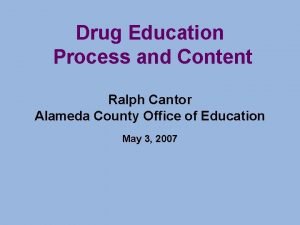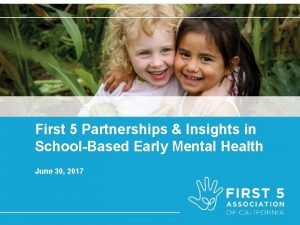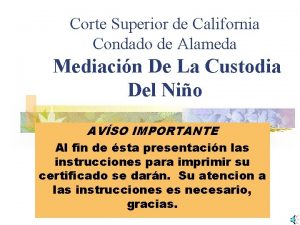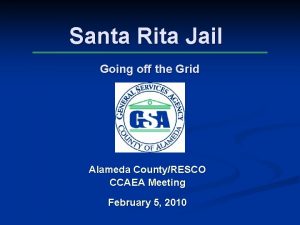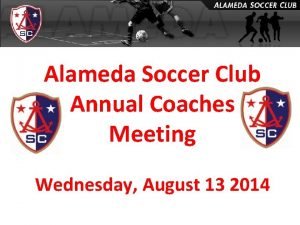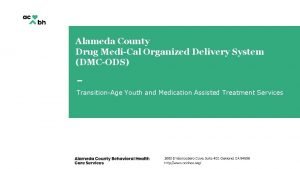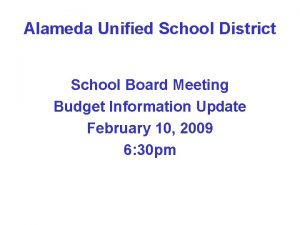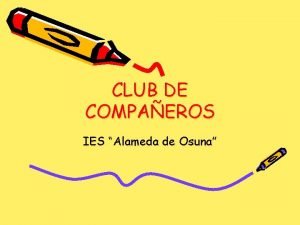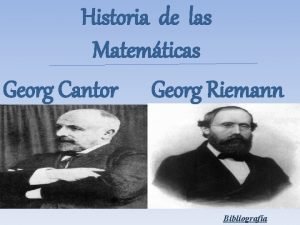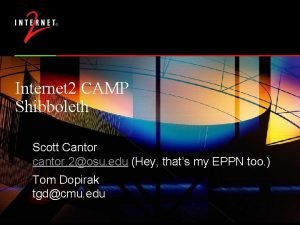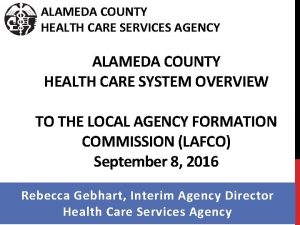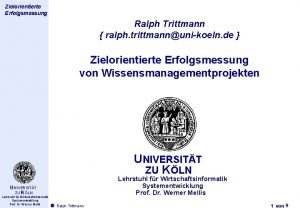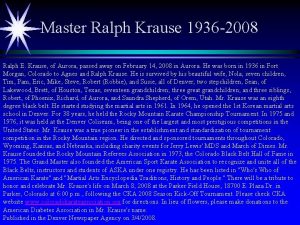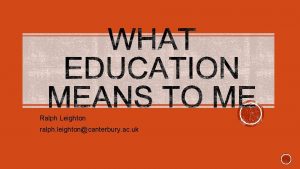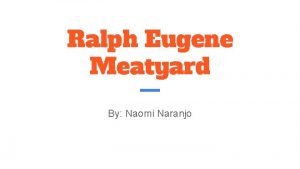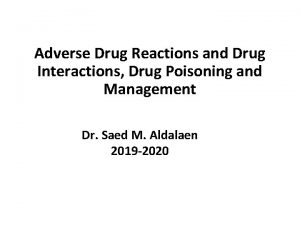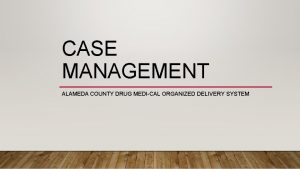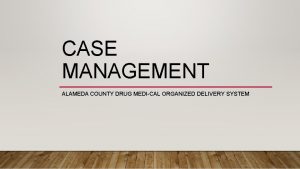Drug Education Process and Content Ralph Cantor Alameda




















- Slides: 20

Drug Education Process and Content Ralph Cantor Alameda County Office of Education May 3, 2007

Goal of drug education § § § Think more deeply about the issues Make a more informed decision Have a positive influence on their behavior Know that adults care and will respond Identify kids needing help For Middle School – delay initial usage ACOE Ralph Cantor 2

How people learn Heart Emotions Thought Prior Experience and Knowledge 3

Process § Present a non-judgmental approach § Establish credibility (Honesty, Knowledge, Authenticity) § Stimulate discussion and serious thought § Art of weaving information (stealing of knowledge) ACOE Ralph Cantor 4

ACOE Ralph Cantor 5

Dopamine vs. Serotonin § Dopamine produces a feeling of pleasure § Serotonin produces a feeling of well being § Difference between pleasure and happiness § Developing skills, interest, relationships, meaning (“getting a life”) § Resiliency ACOE Ralph Cantor 6

ACOE Ralph Cantor 7

Hippocampus § Gateway between short term and long term memory § Draws information from long term memory § Discriminates relevant new information § Trashes unimportant information § Stores new information in long term memory ACOE Ralph Cantor 8

Marijuana Hippocampus ACOE Ralph Cantor 9

Adolescent Brain ACOE Ralph Cantor Adult Brain 10

Strategies and Approaches Talking with children in the classroom or individually Credibility – Believability plus influence Kids will listen, but even more, kids will consider and self reflect; look into what they already know and compare with new information. Example – THC Content ACOE Ralph Cantor 11

Strategies and Approaches Talking with children in the classroom or individually § § § § § Brains are different Not personal Science based Marsha’s experiment and the use of motivational interviewing Not trying to convince Teaching true decision making with a predetermined conclusion Kids are sensitive to being manipulated Use of their knowledge and past experience Give balanced answers ACOE Ralph Cantor 12

Strategies and Approaches Talking with children in the classroom or individually Honesty – They ask you if you ever used mostly to see if you are going to be honest; be real because the reality of the situation is that is what works. ACOE Ralph Cantor 13

Reaching Teenagers § Don’t shove this kind of information down their throat § No propaganda § Non-judgmental/ Fair and Balanced § Honest with integrity § Interactive § Honoring where they are and what they know § Let them steal the information § Authenticity ACOE Ralph Cantor 14

Self Assessment Andrew Weil – Unhealthy relationship § Ignorance that the substance is a drug and what it does to the body § Loss of desired effect w/increasing frequency § Difficulty separating from the drug § Impairment of health or social function § Read handout ACOE Ralph Cantor 15

More to think about… § Various approaches for age and circumstance § What’s worked for you § Classroom settings, individuals, groups, SAP § Marijuana-Tobacco connection § Stages of change and Motivational Interviewing § Summation and conclusions ACOE Ralph Cantor 16

Bibliography § Marijuana: What’s a Parent to believe? Tim Cermak 2003, Hazelden § Uppers, Downers, All Arounders Darryl Inaba 1997, CNS Publications § Understanding Marijuana Mitch Earleywine 2002, Oxford University Press § Buzzed Cynthia Kuhn, et. al. 1998, Norton and Company ACOE Ralph Cantor 17

Instructional Design Services courtesy of Educational Technology Support Services Alameda County Office of Education Bernard Burchette, Director Phone: (510) 670 -4167 E-mail: asketss@acoe. org

ACOE Ralph Cantor 19

Contact Information Ralph Cantor Alameda County Office of Education Program Coordinator (510) 670 -4589 rcantor@acoe. org
 Ralph cantor
Ralph cantor Cantor mass
Cantor mass Accidental adulteration definition
Accidental adulteration definition Characteristics of esp
Characteristics of esp Static content vs dynamic content
Static content vs dynamic content Orange unified school district
Orange unified school district Corte de alameda
Corte de alameda Home stretch alameda county
Home stretch alameda county Alameda off the grid
Alameda off the grid Alameda soccer club
Alameda soccer club Centerpoint alameda county
Centerpoint alameda county Alameda school board
Alameda school board Ies alameda de osuna
Ies alameda de osuna Alameda county transportation commission
Alameda county transportation commission Art diego rivera
Art diego rivera Alameda county hcsa
Alameda county hcsa Scott cantor
Scott cantor State and prove schroeder bernstein theorem
State and prove schroeder bernstein theorem Biografía de bernhard riemann
Biografía de bernhard riemann Capacitive sensor
Capacitive sensor Poeta cantor de rua que na cidade nasceu
Poeta cantor de rua que na cidade nasceu
